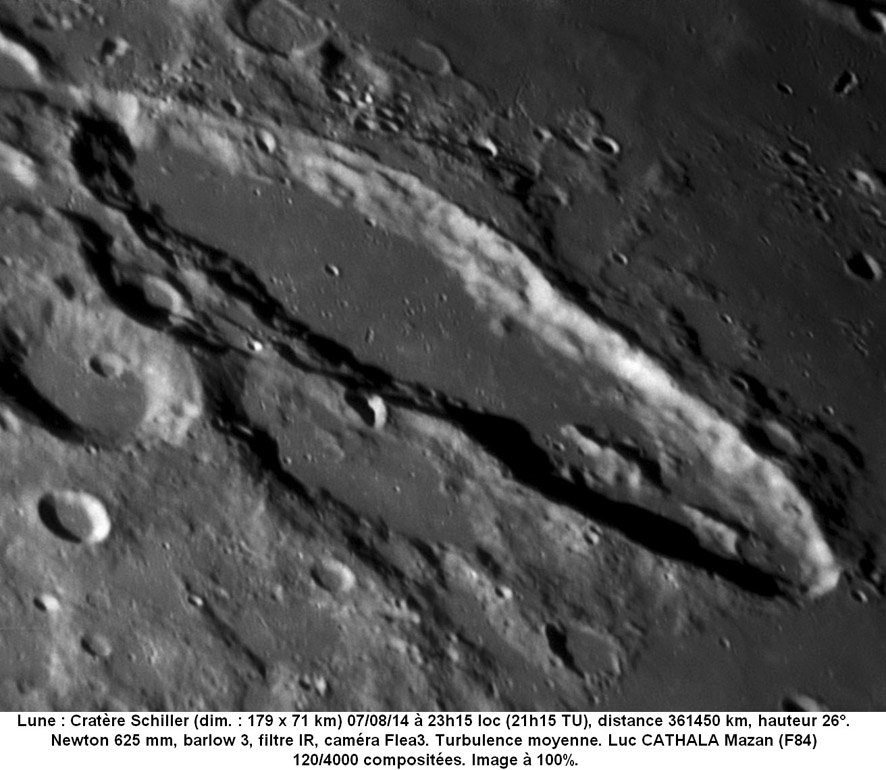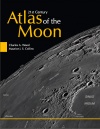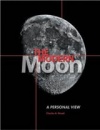Difference between revisions of "August 10, 2014"
(Created page with "__NOTOC__ =Either Or= <!-- ws:start:WikiTextHeadingRule:0:<h1> --> <!-- ws:start:WikiTextLocalImageRule:6:<img src="/file/view/LPOD-Aug10-14.jpg/518126096/LPO...") |
(No difference)
|
Revision as of 23:00, 1 January 2015
Either Or

image by Luc CATHALA Mazan, Vaucluse FRANCE
Schiller was formed by a simultaneous grazing impact of three or four projectiles. The individual crater widths range from about 50 to 70 km. According to calculations, craters this size would have required projectiles 5 to 7 km in diameter if the impact angle was 5°, and double that size if 1°. Assuming 5°, the four separate 6 km wide projectiles before break up could have been a 12 km diameter projectile which, with 90° impact, would have made a single crater 300 km wide. If Schiller's impact angle were 1° the equivalent single crater would have been about 500 km wide. If my calculations are correct - someone should check! - then Schiller is the bizarre replacement for a small impact basin, about the size of the outer ring diameter of Grimaldi. Even though basins are fascinating I guess I am glad we have Schiller instead.
Chuck Wood
Technical Details
August 7 2014, 21h15 UT. Newton 625 mm, 2739mm focal length, on equatorial platform, all home made (excluding mirrors ). Barlow 3 , IR 742 filter, camera Flea3, average turbulence.120 images stacked on 3250. Processed with AutoStakker, Registax.
Related Links
21st Century Atlas chart 24.
Luc's website
COMMENTS?
Click on this icon File:PostIcon.jpg at the upper right to post a comment.



